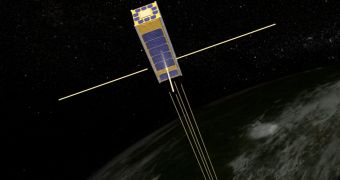Scientists with the NASA Goddard Space Flight Center (GSFC) in Greenbelt, Maryland are currently working on the first cubesat instrument destined to measure the properties of terrestrial gamma-ray flashes (TGF). These spikes in radiation levels are triggered by lightning flashes.
The team is developing the Firefly mission with funding from the National Science Foundation's (NSF) CubeSat program, through the organization's Division of Atmospheric and Geospace Sciences (DAGS).
This will be the first “pocket” satellite designed to investigate the extremely powerful and energetic gamma-ray bursts that appear high in Earth's atmosphere.
Researchers have long since established that lightning strikes our planet about 50 times per second. Still, no mission was ever developed to characterize the properties of radiations that these events trigger. At this point, very little is known about the influence of TGF on aircraft or the planet.
The bread loaf-sized cubesat carrying the Firefly experiment is scheduled to launch later this month. During its time in low-Earth orbit, it will survey lightning strikes originating high in the atmosphere and try to determine how often TGF are produced.
The principal investigator of the Firefly mission is GSFC expert Doug Rowland. He says that these missions can achieve impressive results despite their small size. Cubesats and microsats are becoming increasingly popular for highly-targeted missions such as this one.
“Firefly will gather up to a year of observations on the mysterious workings of lightning,” Rowland says. This is important because TGF are theorized to generate antimatter and gamma rays.
“Lightning is so familiar we tend to take it for granted, but we really don’t know the details of how it works – even though it is a critical part of the global electric circuit, and has obvious social and technological effects,” he adds.
Terrestrial gamma-ray flashes were first identified in the 1990s by the NASA Compton Gamma Ray Observatory. The launch window for the new mission opens starting November 19.
“Gamma rays are thought to be emitted by electrons traveling at or near the speed of light when they're slowed down by interactions with atoms in the upper atmosphere. TGFs are among our atmosphere's most interesting phenomena,” DAGS program director Therese Moretto Jorgensen concludes.

 14 DAY TRIAL //
14 DAY TRIAL //